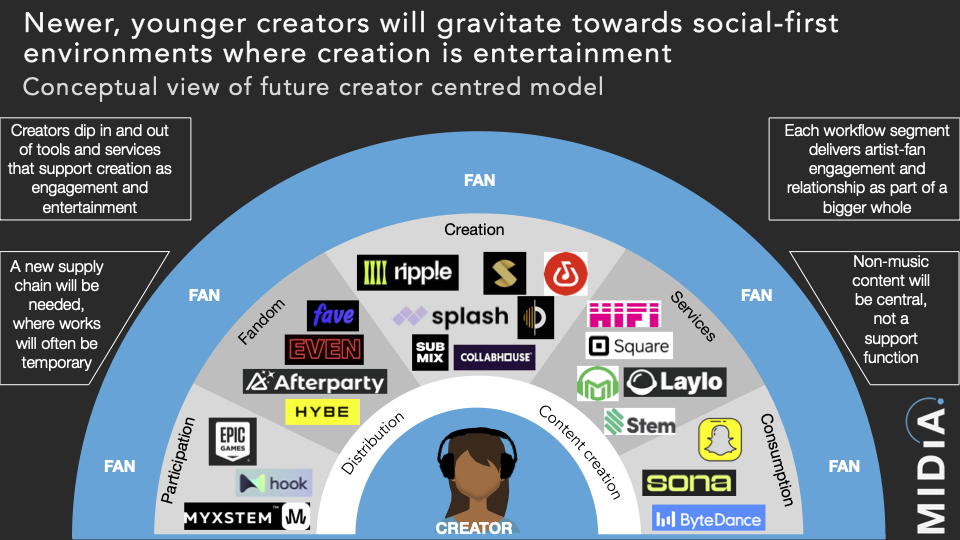I recently presented the tenth edition of the IMS Business Report at the Ibiza-based conference. In MIDiA’s second year creating the report, the findings reveal a global electronic music industry that not only has positive revenue trends but is also experiencing a global cultural resurgence. Here are some of the key findings of the report, which can be downloaded for free here:
- Fandom surge: Electronic music is the smaller of the big, global music genres, but it is, nonetheless, a member of that genre club and it is quickly gaining ground on its peers. Electronic music is growing fandom faster than most other leading genres, adding more fans across YouTube, TikTok, Instagram, Facebook, and Spotify in 2023. This was a turnaround from 2022 when the other big genres (hip hop, rock, Latin) were growing faster than electronic. Electronic music is having a fandom moment.
- New fan markets: Germany, the UK, and Australia have been three of electronic music’s leading markets in terms of culture, fanbase, and revenue for many years. Unsurprisingly, they are also the three countries with the largest cumulative number of Spotify monthly listeners to electronic music (by cumulative we mean the gross total of all ‘listeners’, which means one person can be more than one listener, as per Spotify’s definitions). But the remainder of the top ten Spotify markets reveals the rise of the Global South, with India, Brazil, Mexico, and South Africa all claiming top ten spots. South Africa is particularly interesting; it entered the top ten for the first time in 2023 and has twice as many cumulative monthly listeners as the country does people. Electronic music has quickly established cultural heft in South Africa.
- Rise of Africa: You can tell a trend is worth paying attention to when it starts cropping up in many different places. Not only is South Africa now a top fan territory, but Afro House also became a top 10 Beatport genre for the first time in 2023 as well as a top search term for sample platform LoopCloud. The former points to success of already-made music, the latter music yet-to-be-made. On top of this, #Amapiano views on TikTok hit 9.8bn in 2023, up 168% on 2022, with Tyla hitting 21.7bn global views. Western music, Anglo repertoire especially, has long been used to being the music that ‘exports’. Streaming and social are changing this. The strong rise of African music in global dance music culture is part of a seismic shift in global music culture, with the Global South set to increasingly shape global tastes.

Of course, the highlight of the IMS Business Report is the industry value figure. In 2023, the global electronic music industry was up by 17% to reach $11.8 billion. Growth didn’t always come easy, with over a third of executives saying they had to work hard at success in 2023, but it was nonetheless a good year for electronic music.
Continued strong growth in live (festivals, clubs) was a core component of the industry revenue trend but recordings and publishing also performed well. While total industry growth was not as strong as in the 2022 post-pandemic ‘rebound’ year, 2023 showed what long term, organic growth can look like. The global dance music business is now in its post-post-pandemic growth phase!





